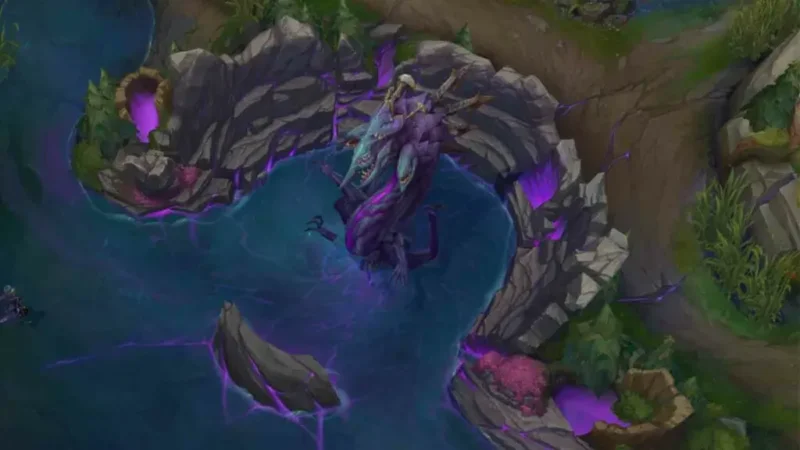

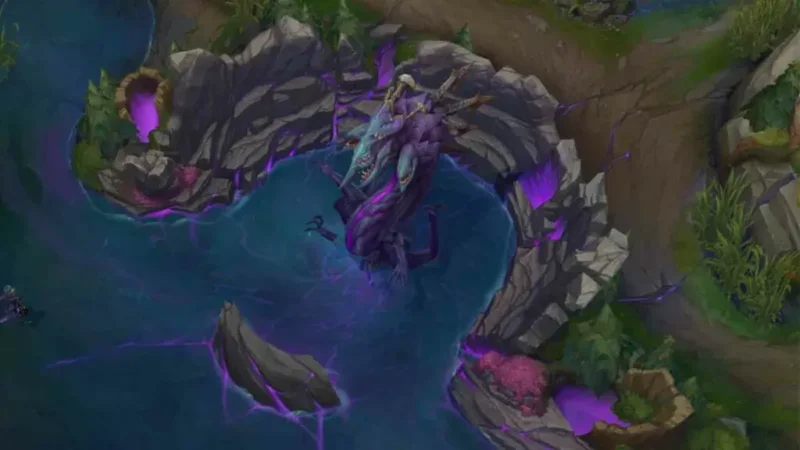
The League of Legends map, known as Summoner's Rift, hasn't had major changes since 2019! While the map is overall considered great, players have found some issues as they got better at the game. Riot developers are now tweaking the map, not to fix every problem, but to improve gameplay. New issues might arise, but no map is perfect.
The goal is to make the lanes fairer. Previously, the red and blue sides of the map had different advantages in terms of attacks, fights, and positioning. These differences won't go away but will be less significant. For instance, the top lane on the red side won’t feel as vulnerable.
The changes aim to shield solo lanes, like the top and mid lanes, from early attacks by junglers or roaming supports in higher skill levels. This balances the game, as these early attacks were often too overpowered.
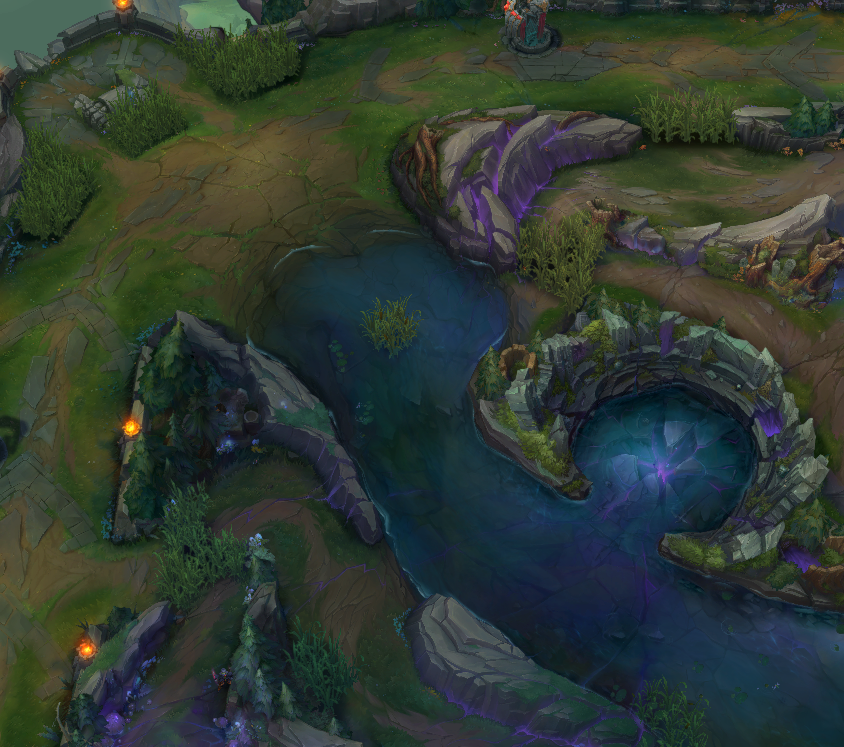
The changes in the top lane are designed to lessen the influence of other players, such as junglers and roaming supports, during the early stages of the game. This allows the lane to focus more on individual skill and 1v1 combat.
The position of the brush in the top lane has been strategically moved to a more centered pixel. Initially, the brush favored one side, giving an unfair advantage in terms of vision and ambush potential. Now, the brush is placed more centrally in the river area. This new positioning makes it equally accessible from both sides, ensuring a more balanced gameplay. It also changes the optimal locations for warding, as players now need to consider this new, more neutral bush position.
The early deployment of Rift Herald in the top lane, which often disrupts the laning phase by destroying towers and skewing gold distribution, is being adjusted to reduce volatility and increase top laners influence on early objectives and team success.
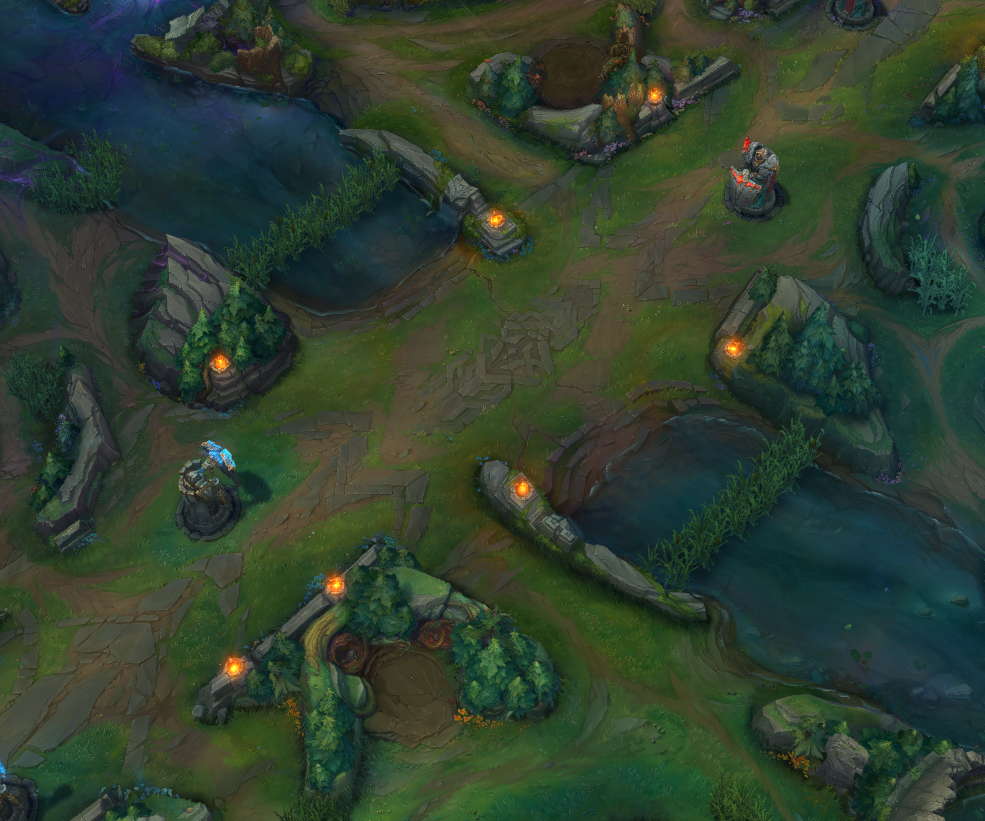
The mid lane has been modified to be safer for immobile characters who lack self-defense mechanisms. These changes are tailored to reduce the vulnerability of such characters to jungler or support ganks.
New roaming paths have been introduced in the mid lane, offering safer routes for players to move to other parts of the map. These paths are designed to be less exposed, allowing players to roam with a reduced risk of being ambushed.
The brush in the mid lane has been repositioned and possibly resized to provide more reaction time for players against enemy attacks. This change affects how players approach vision control and ganking in the mid lane, as the altered brush placement alters the dynamics of surprise attacks and vision wars.
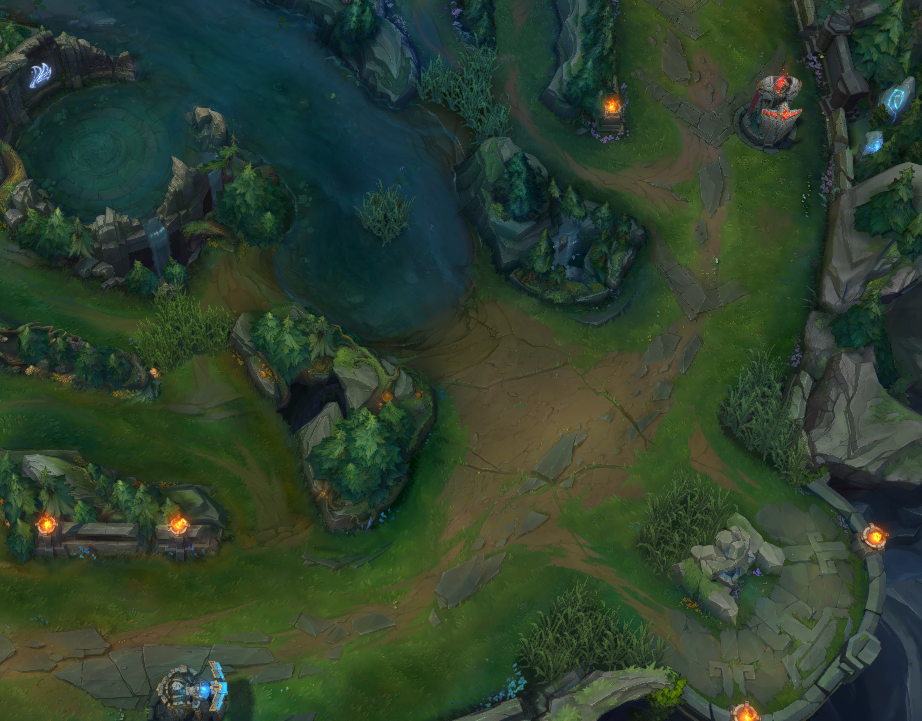
The bot lane now features new gank pathways for attacks, particularly through the bottom red jungle. This change introduces a new dynamic to the lane, offering more options for junglers and other roaming players to launch attacks.
With the introduction of these new pathways, the developers aim to even out the risk of attacks from different sides of the map. This means adjusting the terrain and brush placement to ensure neither the red nor the blue side has an inherent advantage in terms of ganking potential or defensive positioning. The odds have been evened out in botside, making the red side more accessible for ganks and rotations, altering the fundamental gameplay of the lane. Meanwhile, the blue side has seen little to no changes.
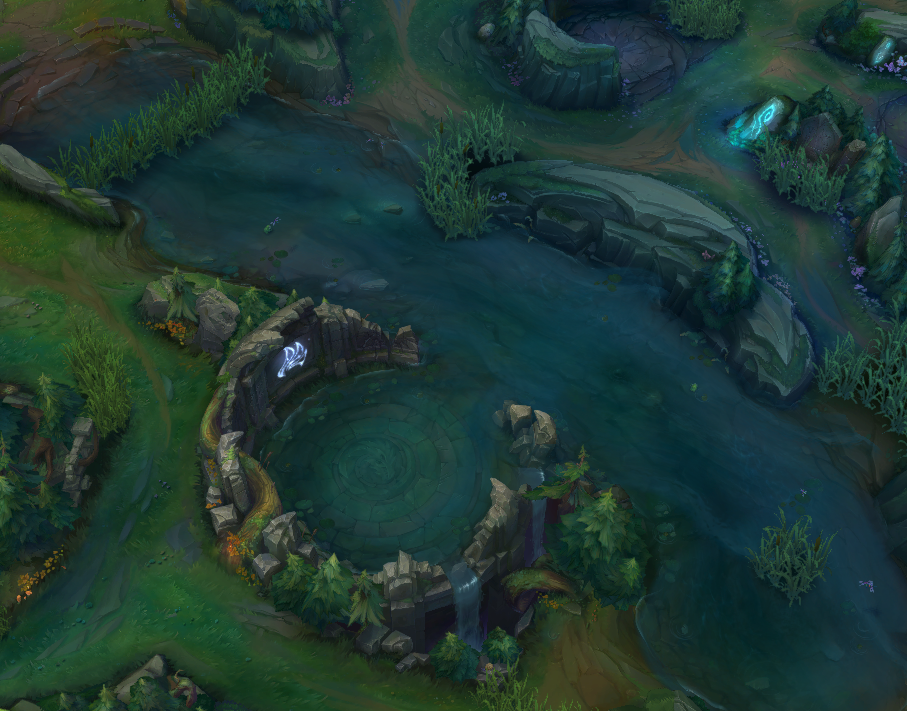
The jungle terrain has been restructured to complement the changes in the lanes. It includes modifying the paths, brush placements, and the shape of the jungle itself. The adjustments are made to ensure the jungle layout supports the new dynamics in the lanes and the overall game flow.
The pathways within the jungle have been redesigned. It includes widening certain paths that allow easier movement and potentially adding new routes. These changes are intended to offer players more options for moving around the jungle and approaching or retreating from key areas like the Baron or Dragon pits.
The placement and size of the brush in the jungle have been adjusted. Some brushes may have been moved to new locations, while others might have been resized or reshaped. These changes affect how players secure vision in the jungle and engage in ambushes or surprise attacks.
The areas around the Dragon and Baron pits have been redesigned to include more entry points. It means there are now several ways for teams to approach these major objectives, making the fights around them more dynamic and less predictable.
The goal of these changes is to ensure that contesting Dragons and Baron Nashor is more balanced. Previously, certain areas might have favored one team over the other based on their side of the map. The new design aims to eliminate such imbalances, giving both teams an equal opportunity to engage in and contest these objectives.
The changes around these objectives open up new tactical opportunities, such as flanking maneuvers or strategic retreats, due to the varied entry points and redesigned terrain.
The adjustments in the jungle add a layer of strategic depth to the game, as players must now adapt to the new terrain and exploit the opportunities it presents.
With multiple entry points to key objectives and a redesigned jungle, team coordination becomes even more crucial. Teams will need to communicate effectively and plan their moves around the jungle and objective areas.
Here's all the info on League of Legends Season 2024 map updates, complete with a side-by-side comparison. Stay tuned to the WeCoach blog for more insights and updates as we gear up for the thrilling season 14 of League action.